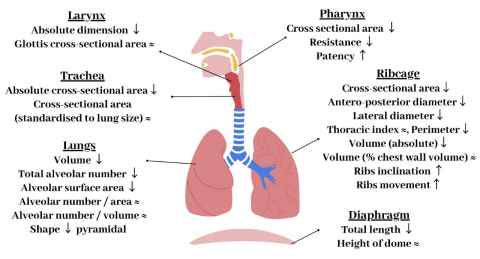Sex differences in the respiratory system
Learn about a few key sex differences in the respiratory system and how important they are in lung function and disease.
Without the knowledge that a problem exists, it is difficult to solve. We want to raise awareness by providing some examples of known sex differences in biology and physiology. This page gives some examples for the lungs.
The figure below shows some examples of differences in the anatomy or structure of the lungs in females (when compared to male). The arrows show whether these aspects are smaller (↓) or larger in females (↑), or whether they are about the same (≈).

Sex hormones also affect the lungs in various ways including inflammatory processes, breathing control, and the tone of airways and blood vessels. These differences lead to differences in disease prevalence, disease presentation, disease progression, and treatment outcomes. For example:
- In patients with Chronic Obstructive Lung Disease, females have been shown to develop more small airways disease and airflow obstruction, whereas males develop more emphysema.
- In children <18 years asthma is more common in males but this trend is reversed in adults.
- Females have a greater risk of pulmonary arterial hypertension but also have a better survival rate than males.